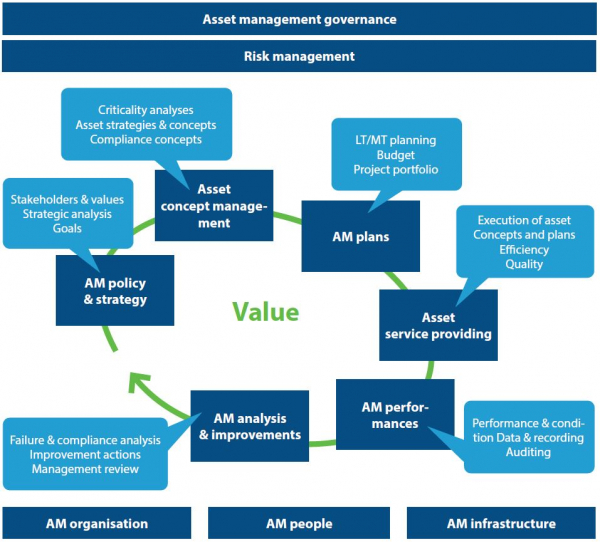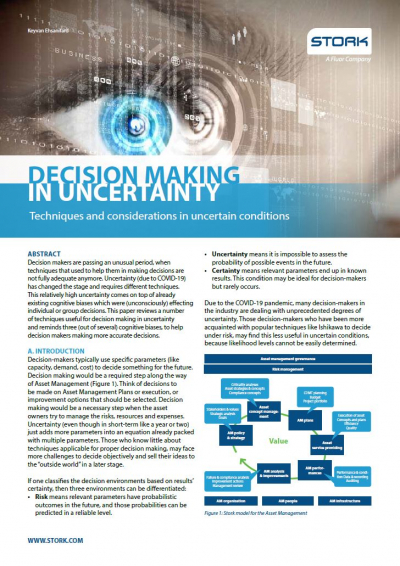Decision making in uncertainty
Decision makers are going through an unusual period, when the techniques that used to help them make decisions are no longer quite adequate. The uncertainty (due to COVID-19) has changed the scenario and requires different techniques. This relatively high uncertainty adds to cognitive biases that affect individual or group decisions.
Decision makers typically use specific parameters (like capacity, demand, cost) to decide something for the future. Decision-making would be a required step along the way of Asset Management (Figure 1). Think of decisions to be made on Asset Management Plans or execution, or improvement options that should be selected. Decision-making would be a necessary step when the asset owners try to manage the risks, resources and expenses.

Figure 1: Stork model for the Asset Management
Uncertainty (even though in short-term like a year or two) just adds more parameters into an equation already packed with multiple parameters. Those who know little about techniques applicable for proper decision-making, may face more challenges to decide objectively and sell their ideas to the “outside world” in a later stage.
If one classifies the decision environments based on results’ certainty, then three environments can be differentiated:
- Risk means relevant parameters have probabilistic outcomes in the future, and those probabilities can be predicted in a reliable level.
- Uncertainty means it is impossible to assess the probability of possible events in the future.
- Certainty means relevant parameters end up in known results. This condition may be ideal for decision-makers but rarely occurs.
Due to the COVID-19 pandemic, many decision-makers in the industry are dealing with unprecedented degrees of uncertainty. Those decision-makers who have been more acquainted with popular techniques like Ishikawa to decide under risk, may find this less useful in uncertain conditions, because likelihood levels cannot be easily determined.
My paper 'Decision making in uncertainty' Tries to shed light on techniques that can be used to ease this process (at least to some extend) and help ending up into more reliable decisions by taking into account a number of dominant biases in decision making.
